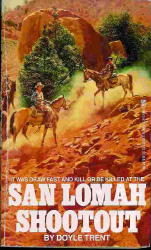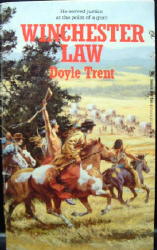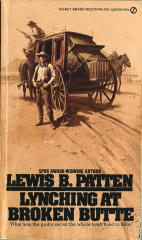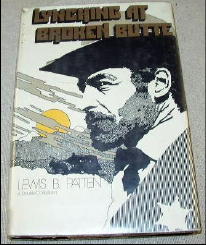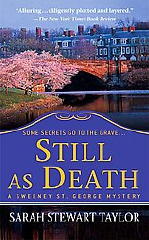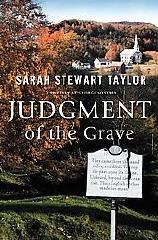Mon 6 Oct 2008
Review: NANCY PICKARD – No Body.
Posted by Steve under Authors , Bibliographies, Lists & Checklists , Characters , ReviewsNo Comments
NANCY PICKARD – No Body.
Pocket, paperback reprint; 1st printing, November 1987. Hardcover edition: Charles Scribner’s Sons, October 1986.
I can sum up one impression of this book in one short sentence: More, I think, about funeral homes than I wanted to know.
This was the third appearance of Jenny Cain, Nancy Pickard’s first series character, and the first to be published in hardcover, the previous two being paperback originals from Avon. For the record, here’s a list of all of Jenny’s full-length cases. (There are no short stories about her, as far as I’ve been able to discover.)
Generous Death. Avon, pb, 1984.

Say No to Murder. Avon, pb 1985. Winner of the first Anthony Award for Best Paperback Original Mystery.
No Body. Scribner, 1986. Nominated for an Anthony.
Marriage Is Murder. Scribner, 1987. Winner of the Macavity Award for Best Mystery Novel.
Dead Crazy. Scribner, 1988. Nominated for both the Agatha and Anthony awards.
Bum Steer. Pocket, 1990. Winner of the Agatha Award for Best Mystery Novel.
I. O. U. Pocket, 1991. Edgar Nominee for Best Mystery Novel, Agatha Winner for Best Mystery Novel, Macavity Winner for Best Mystery Novel.
But I Wouldn’t Want to Die There. Pocket, 1993.
Confession. Pocket, 1994.
Twilight. Pocket, 1995. Nominated for an Agatha Award.

I may have missed some of the nominations the books in the series have gathered, but even so, it’s an impressive list.
The title of Twilight suggests that it may be the last in the series. Given that 13 years have gone by since it came out and Pickard has begun another series in the meantime (one featuring true-crime author Marie Lightfoot), Jenny may have packed up her sleuthing duties for good.

Jenny is the director of the Port Frederick Civic Foundation, which means that she knows all the important people in a small town. Also helping to explain why he has such success in getting involved (and solving) crimes of murder is the fact that she lives with Detective Geof Bushfield of the local police department. (I don’t believe it was ever stated in No Body, but Port Frederick is in Massachusetts. While reading it, I was under the slight assumption that it was in Maryland.)
No Body is strong on humor, but other books in the series become gradually darker, or so I’ve been led to believe. Nonetheless, I think the Jenny Cain books fall in the forefront of the cozy, malice domestic movement in which amateur detectives, most of them women, have gradually taken over the non-thriller portion of the mystery publishing world today, filled as it is with quilters, herbalists, catsitters, wedding planners and so on.
One of Jenny’s problems to solve at this book is that of 133 missing bodies in a 19th century and now closed cemetery. But while investigating the archives of the Harbor Lights Funeral Home, a more serious current crime is committed — the body of a dead man’s secret lover is found in his cover just before it’s put to earth.

Many of the secondary characters presumably appeared in the first two books in the series. They seem familiar enough to the author that she doesn’t feel the need to overly describe them or get them involved. For the most part they stay in the background, allowing a full focus to be placed on solving the murder. Good news, as I far as I am concerned.
Geof is called out of town for most of the book, in fact, allowing Jenny nearly free rein in tackling the case, not always successfully, adding immensely to the comic effect. The ending is quite a spine-tingler — caused by Jenny’s not quite thinking things through — but the story becomes quite a page-turner at the conclusion, there’s no doubt about that at all.
[FOLLOW-UP.] Who would I pick to play Jenny Cain in the movies? Maybe a younger Shirley MacLaine. As for Lew Riss, the disheveled dope-smoking local reporter with dreams of a Pulitizer (and a hopeful but unrequited yearning for Jenny), perhaps Richard Dreyfuss would do.
